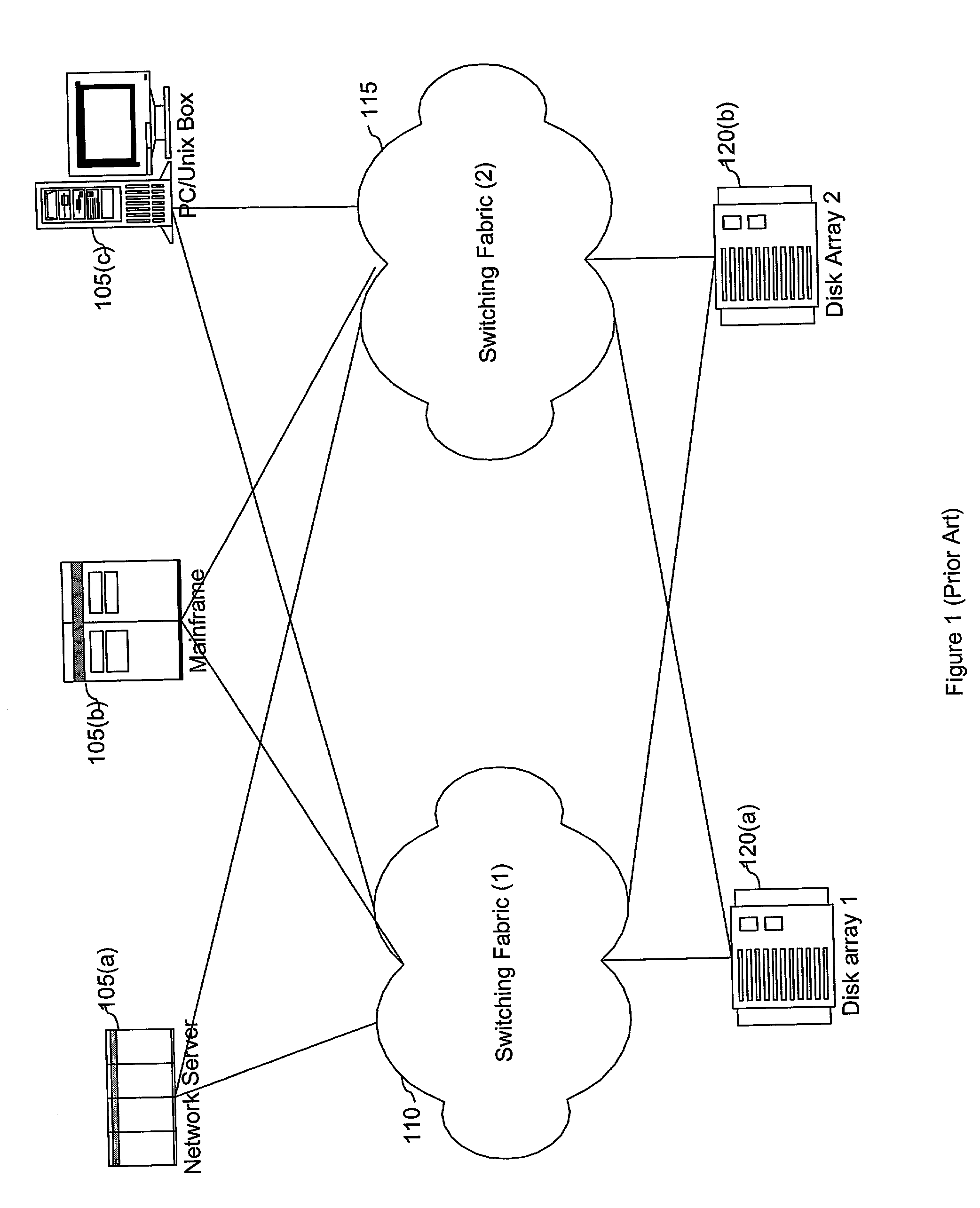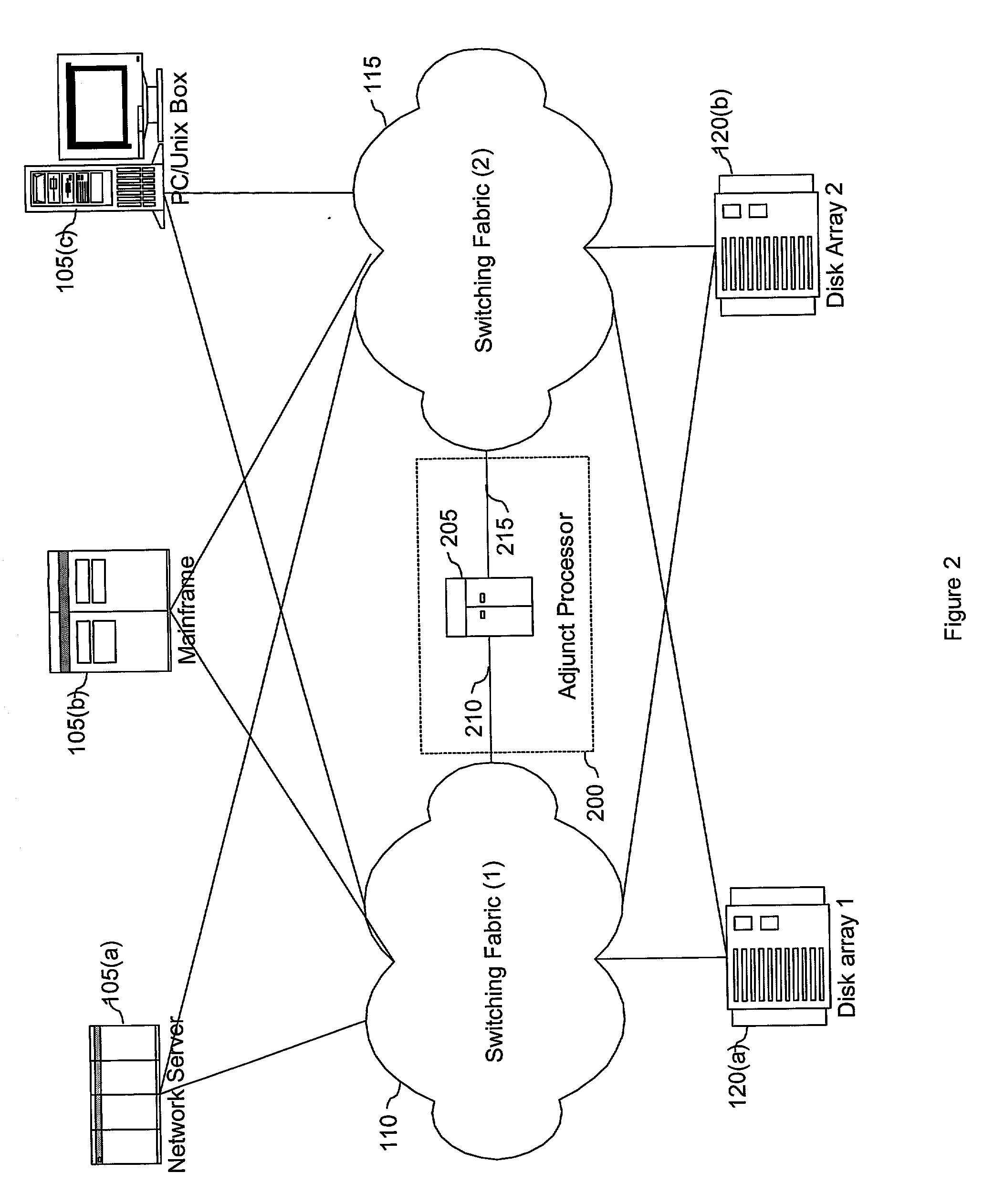Network fabric management via adjunct processor inter-fabric service link
a network fabric and processor technology, applied in the field of virtualization of multi-fabric storage area networks, can solve the problems of network management problems, cumbersome operating models, and high switching elements cos
- Summary
- Abstract
- Description
- Claims
- Application Information
AI Technical Summary
Benefits of technology
Problems solved by technology
Method used
Image
Examples
Embodiment Construction
of Inter-Fabric Service Link
[0058] FIG. 5 shows a general block diagram of software operating on both the inter-fabric adjunct processor 515 and switching elements 500 within a switching fabric. IFSL services software 520 operates on the inter-fabric adjunct processor 515 to receive, analyze and transmit switching fabric management data. The IFSL services software 520 is constantly receiving management data from each of the attached switching fabrics. As a result, this management data may be analyzed in light of other management data from the same switching fabric as well as management data from other switching fabrics within a storage area network.
[0059] An IFSL agent 505 generates and transmits management data at each element 500 within a switching fabric. Specifically, the IFSL agent 505 monitors characteristics of a corresponding switching element 500 and reports to the IFSL services software 520. Examples of switching element characteristics include:
[0060] (1) whether the switc...
PUM
 Login to View More
Login to View More Abstract
Description
Claims
Application Information
 Login to View More
Login to View More - R&D
- Intellectual Property
- Life Sciences
- Materials
- Tech Scout
- Unparalleled Data Quality
- Higher Quality Content
- 60% Fewer Hallucinations
Browse by: Latest US Patents, China's latest patents, Technical Efficacy Thesaurus, Application Domain, Technology Topic, Popular Technical Reports.
© 2025 PatSnap. All rights reserved.Legal|Privacy policy|Modern Slavery Act Transparency Statement|Sitemap|About US| Contact US: help@patsnap.com



